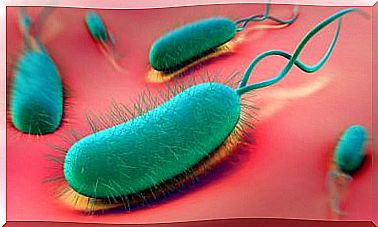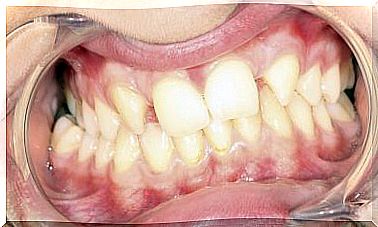Neomycin: What It Is And How It Works
Neomycin is an antibiotic from the aminoglycoside group used mainly in ointments. This means that it is a very common topical medicine. Has it ever been prescribed for you? Do you want to know more about it? In that case, do not stop reading everything that we are going to tell you below.
An antibiotic is a substance produced by a living being that can kill or prevent the growth of different microorganisms. We also include synthetic derivatives in the antibiotic category.
But beware, do not confuse antibiotics with antibacterials.
The term antibiotic includes substances that are effective against different microorganisms such as fungi or bacteria.
On the other hand, antibacterials are specific to bacteria.
Neomycin is obtained from the microorganism Streptomyces fradiae. This microorganism produces three different types of neomycin: A, B and C. The second of them, neomycin B, is the most used.
Let’s take a closer look at the following points about the aminoglycoside neomycin below:
- Mechanism of action.
- Pharmacokinetics.
- Adverse reactions.
Mechanism of action

Here are the most prominent characteristics of antibiotics:
- In the first place, antibiotics carry out their function by the ability to act on different cellular targets.
There is a group that works by inhibiting cell wall synthesis, such as penicillins. Another is capable of interfering with the synthesis of bacterial DNA, such as quinolones. - They can also act by modifying the properties of the cell membrane, as do polymyxins.
There are antibiotics capable of interfering with the synthesis of folic acid. In addition, they can inhibit DNA synthesis.
- There is a last group that is responsible for inhibiting the protein synthesis of the bacteria.
Within this group we find neomycin and the rest of aminoglycosides. - Neomycin is able to penetrate cells thanks to an active oxygen-dependent transport system.
Once inside the cell, it binds irreversibly to the 30s subunit of ribosomes. This causes a decrease in protein synthesis or a defective production of them.
Its action will be enhanced if it is administered together with other antibiotics that facilitate penetration into the cell (that affect the cell wall). - Finally, due to the need for active oxygen transport, they will act as bactericides against aerobic gram-negative bacilli, such as Enterobacteriaceae. It is widely used for Pseudomonas infections .
How do bacteria develop resistance to neomycin?
Today we tend to misuse antibiotics and sometimes abuse them. As a result, much effectiveness in treating bacterial infections is being lost.
The more antibiotics are used, the more accustomed bacteria will be to dealing with them and the more defense mechanisms they will develop. This is why its use should be limited to situations that are really necessary.
In short, there has been an emergence of multi-resistant bacteria that adopt mechanisms to deal with the drug, avoiding its effect.
In the case of neomycin, the resistance mechanisms that bacteria can develop are the following:
- Reduced access of the drug to the cytoplasm.
- The development of enzymes that modify the structure of the antibiotic, making it lose its effectiveness.
- Alteration of drug binding sites.
Pharmacokinetics

Neomycin is used both topically and orally. It can also be used as a retention enema in those patients who do not accept oral medication.
It has very low absorption in the gastrointestinal tract, around 3% of an oral dose. This is because it is a basic compound and is ionized in the stomach, making it difficult to absorb.
As a consequence, neomycin is excreted mainly in the faeces and therefore it is very effective against infections in the digestive tract.
On the other hand, in adults with normal kidney function, the elimination half-life, that is, the time it takes for half the drug concentration to be eliminated, is 2-3 hours. Meanwhile, in those with kidney failure, it is increased to 12-24 hours. For this reason, patients with kidney failure should exercise caution.
Adverse reactions

We must distinguish between those that are produced by oral administration and those that are due to topical administration.
Orally
Although neomycin is not absorbed in large amounts by this route, it is one of the most ototoxic aminoglycosides.
Ototoxicity is a reversible or irreversible harmful effect that damages the ear. In addition to ototoxicity, it is important to highlight its possible kidney involvement, causing nephrotoxicity or kidney failure.
Symptoms of this complication include:
- Azotemia.
- Increased serum creatinine concentrations.
- Decreased creatinine clearance.
- Pyuria: presence of white blood cells in the urine.
- Proteinuria: elevation of the concentration of proteins in the blood.
In addition to these effects, it can also cause intestinal problems such as nausea or vomiting.
Topical route
Neomycin, topically, is used in superficial infections of the skin or its structures. In this case, the adverse reactions that the patient is likely to suffer are the following:
- Contact dermatitis: develops from an allergic reaction to the antibacterial.
- Pruritus.
- Rash.
Have you been prescribed this medicine? In that case, follow the doctor’s or pharmacist’s instructions.









